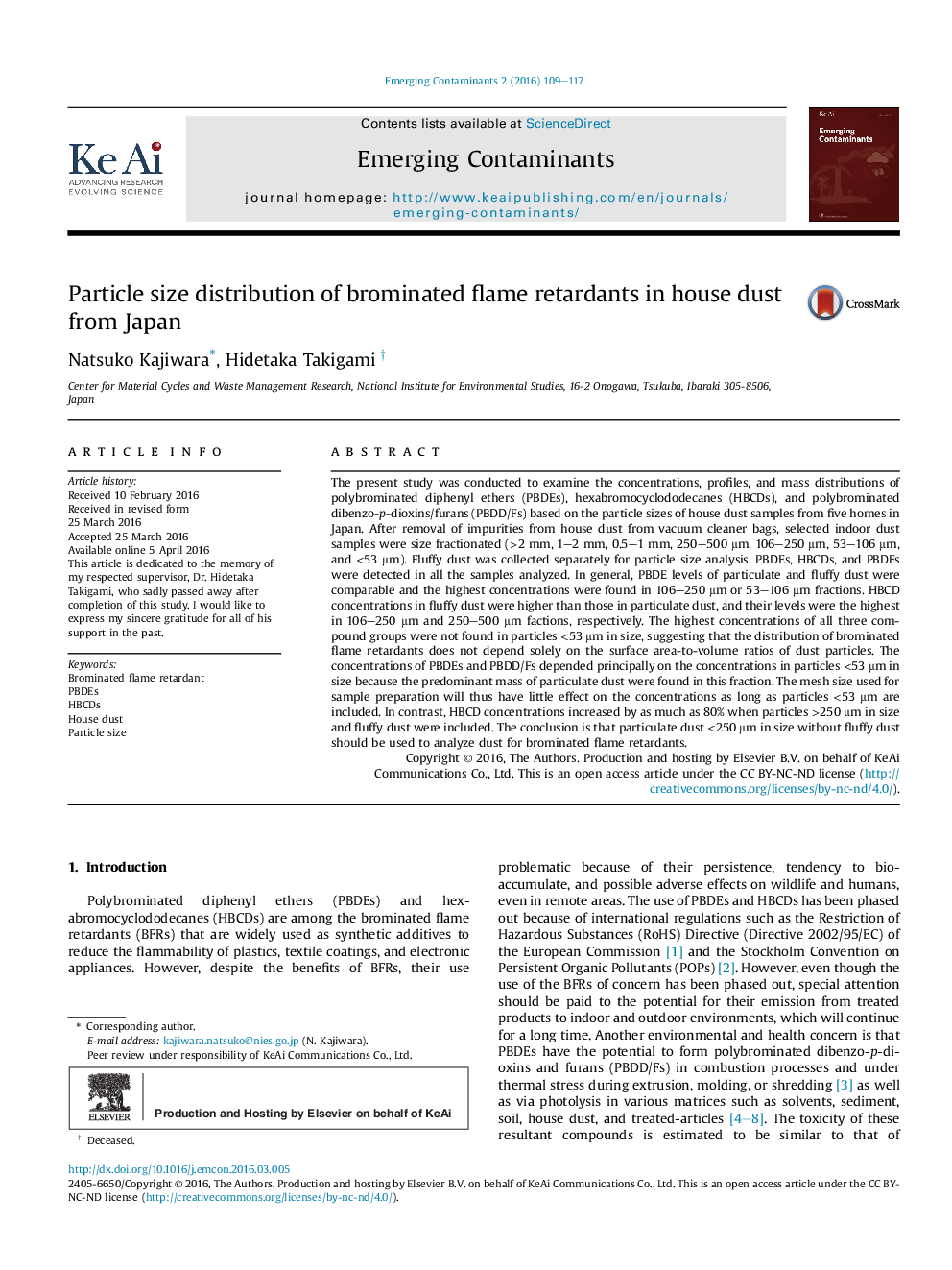| Article ID | Journal | Published Year | Pages | File Type |
|---|---|---|---|---|
| 4422653 | Emerging Contaminants | 2016 | 9 Pages |
The present study was conducted to examine the concentrations, profiles, and mass distributions of polybrominated diphenyl ethers (PBDEs), hexabromocyclododecanes (HBCDs), and polybrominated dibenzo-p-dioxins/furans (PBDD/Fs) based on the particle sizes of house dust samples from five homes in Japan. After removal of impurities from house dust from vacuum cleaner bags, selected indoor dust samples were size fractionated (>2 mm, 1–2 mm, 0.5–1 mm, 250–500 μm, 106–250 μm, 53–106 μm, and <53 μm). Fluffy dust was collected separately for particle size analysis. PBDEs, HBCDs, and PBDFs were detected in all the samples analyzed. In general, PBDE levels of particulate and fluffy dust were comparable and the highest concentrations were found in 106–250 μm or 53–106 μm fractions. HBCD concentrations in fluffy dust were higher than those in particulate dust, and their levels were the highest in 106–250 μm and 250–500 μm factions, respectively. The highest concentrations of all three compound groups were not found in particles <53 μm in size, suggesting that the distribution of brominated flame retardants does not depend solely on the surface area-to-volume ratios of dust particles. The concentrations of PBDEs and PBDD/Fs depended principally on the concentrations in particles <53 μm in size because the predominant mass of particulate dust were found in this fraction. The mesh size used for sample preparation will thus have little effect on the concentrations as long as particles <53 μm are included. In contrast, HBCD concentrations increased by as much as 80% when particles >250 μm in size and fluffy dust were included. The conclusion is that particulate dust <250 μm in size without fluffy dust should be used to analyze dust for brominated flame retardants.
